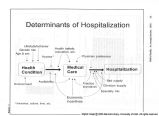| OCR Text |
Show Data Section This section provides a general overview of statistical data relating to health in Utah. When available, data for the United States are provided for comparison. In most cases, data are reported over a period of time to give the reader a sense of trends in Utah and the nation. The data section is divided into five subsections: Demographics; Health Status; Risk Factors; Health Risks to Children and Infants; and Health Care Costs, Access, and Quality. These are followed by a List of Sources, citing all references used in the data section. It may be noted by careful observers that there is no longer a subsection entitled Public Health. This is not because public health is considered to be of lesser importance. On the contrary, public health is the essence of the entire data section. Public health concerns permeate all subsections. For example, social and economic considerations can be found in Demographics. The Health Status subsection features health status indicators of chronic and infectious diseases, many of which have been targeted by the Healthy People 2000 program. Risk Factors and Health Risks to Children and Infants subsections include items such as smoking, safety belt use, prenatal care, and immunizations that have become the focus of key public health campaigns. Cost, access, and quality issues, without question, are public health concerns. Utahns generally enjoy good health relative to the rest of the United States. Utah continues to have the lowest rates of smoking in the nation and compares favorably in other measures of healthy behaviors. This may contribute to Utah's relatively low rates for certain chronic health problems such as lung cancers and diseases of the heart. However, Utah compares less favorably in other areas. Utah's mortality rates for prostate cancer, diabetes mellitus, pneumonia and influenza are higher than national averages. Suicide mortality rates and incidence of rape in Utah are also above U.S. rates. In addition, Utah, primarily along the Wasatch front, has had difficulty complying with national air quality standards for a number of pollutants. New in this year's Review is a report on environmental health in Utah. Another new addition to the data section is an introduction to hospital discharge data. Though relatively new, these data can help increase our understanding of disease incidence, especially as the data base expands over the coming years. This year, data by county have begun to be incorporated into the Review. While most Utahns live along the Wasatch front, 22 percent of the state's population is spread out over a very large, geographically diverse area. Including only aggregate data and state averages may not reflect the reality that exists for some Utahns, particularly in terms of access to health care. By breaking down some of the data by county, it is hoped that a more accurate representation of Utah's health picture will begin to emerge. All data in the Review come from other reports and publications. An extensive List of Sources concludes the data section, beginning on page 119. Sources are cited by table and are intended to provide the reader with a readily available reference for further research. A brief glossary of key terms has also been included on page 131. The Review staff would like to thank all who contributed time and resources to produce the data section. Utah's State Department of Health and the Governor's Office of Planning and Budget provided the bulk of the data found here. The members of the Data Advisory Committee deserve special thanks for their keen interest and for generously sharing their expertise and data with the staff. Utah's Health: An Annual Review 1995 39 |


























































































































































